
Yesterdays nice afternoon had given way to drizzle this morning. We headed back north to Cromwell and our first destination. A few miles to the west of Cromwell is the Kawarau Gorge mining centre. We stopped here as it was another opportunity to try panning for gold. Access to the mining centre is across a narrow bridge spanning the gorge. Fortunately this bridge was sturdily made from concrete so I didn’t have much of a problem crossing it. There was a guided tour leaving in a few minutes after our arrival so we hung around the visitor centre until it started.
The chap doing the tour was very, very, good. He said that he’d been a prospector in Australia and South Africa as well as New Zealand. He explained where to pan for gold in a river (in the gravel that has deposited in an ox-bow in the river). He handed round a good sized nugget of gold and was rather keen to get it back after everyone had looked at it!
He also showed us a neat way of comparing the weights of two different objects. We were given two different sized stones and asked to guess which was the heavier. Holding them in the palms of my hand they felt roughly the same. The trick is to hold each one between the thumb and forefinger and dangle them. That way gravity is the only force acting on them and the difference in weights becomes obvious. When holding the stones in the palms of your hand their different weights are balanced out by their different sizes. They have roughly the same surface area and thus exert the same pressure on your hand.
After that he took us on a guided tour of the gold mining area. First he showed us a Pelton water wheel that was used to power various machinery on the site. I was amazed to learn that a Pelton water wheel was 90% efficient. When Lester Pelton developed his design the best water wheel at the time could only extract 75% of the energy from the water passing it.
![]()
![]()
![]()
![]()
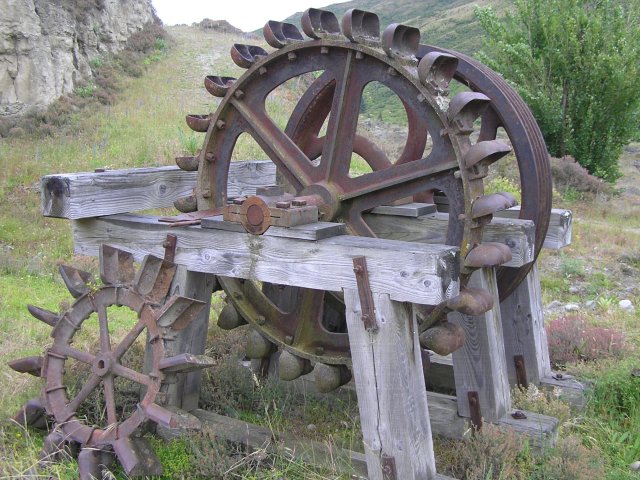
![]()
![]()
![]()
![]()
The secret to the Pelton water wheel is the split curved buckets. This stops water splashing back and interfering with the oncoming flow
We then saw a Pelton wheel in action powering a rock crusher. This was an incredible machine, over 100 years old but still in good working order. Gold bearing quartz is fed into the device from the overhead ramp. A series of pistons crushes the rocks to fine gravel which is flushed through a sluice trap catching the gold. The crusher’s water supply is on a valve which the guide opened to start the machine. He let it run for a minute and it was amazing to watch it thunder away.
![]()
![]()
![]()
![]()
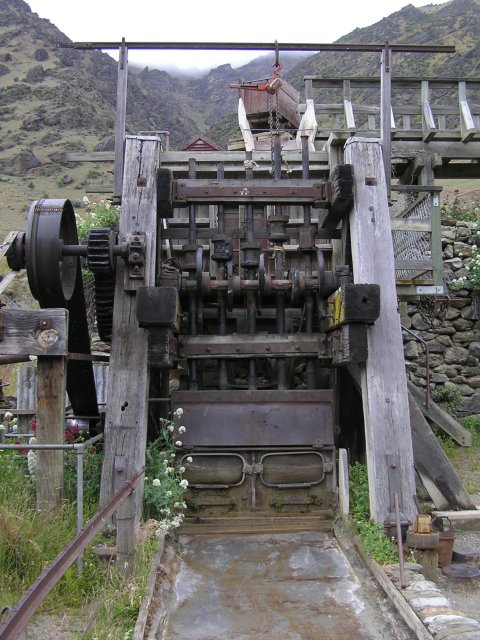
![]()
![]()
![]()
![]()
The five pistons are driven by the belt on the left. Crushed rock sluices down the tray in front of the machine. The tray would be covered with velvet to catch the flakes of gold. At the end of each day the gold would be combed from the velvet and every month the velvet would be burnt to extract any trapped gold dust
![]()
![]()
![]()
![]()
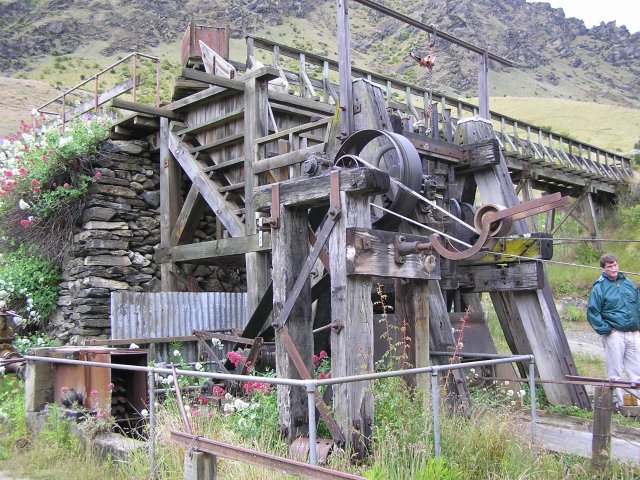
![]()
![]()
![]()
![]()
The crusher is driven by a Pelton water wheel. You can just see its curved scoops in the box in the bottom left. The water supply runs in a 6 inch pipe down a hill from a dam higher up. Seeing such a small amount of water do so much work is impressive
From the rock crusher we went further up the hill to a high pressure water hose that was used in the 1930’s to wash away the gold-bearing gravel from the side of the hill and through sluices. The guide fired up the hose for a few seconds but there’s not much of the hill left so he couldn’t run it for long. It was then when the heavens opened and heavy rain started. We sheltered for a while in an old assay hut where gold was weighed and graded. Apparently the floorboards were taken up each year and burnt to extract and gold dust trodden into them! Once the rain has eased off we headed back to visitors centre for a coffee and cake in their café.
Once the rain had stopped we went back outside to their gold panning area. This was so much better than at Shantytown. We got a pan and a shovel and were able to help ourselves to gravel. First the tour guide gave us a demonstration. As he didn’t know whether or not he had gold in the pan he dropped a couple of lead shot into the gravel. After a couple of minutes work he was left with the lead balls and some gold flakes in the bottom of the pan.
We all rushed off to make our fortunes rich but after several pans and an hours work I had nothing to show for it. I don’t think my friends found anything either. It was hard work but still fun and I’d like to try gold panning again sometime.
The rain seemed to be coming on again and we’d all given up hope of striking it rich so we decided to go to Gibbston Valley vineyard and Cheesery on SH6 to the east of Queenstown. We put our heads around the door of the cheesery and were met with an overpowering smell of cheese so we decided to take the vineyard tour instead. This was quite interesting, describing the different grape varieties for each wine and the harvesting and fermentation process. The winery has a cave they store barrels of wine in as they mature. This cave isn’t natural but was dug 75 meters into the side of a hill. At the far end there’s constant humidity and a temperature of 14°C. Here we tasted several wines which were all nice. Then a child in our tour started kicking up a fuss; a 5 year old’s screams are quite loud in a cave!
![]()
![]()
![]()
![]()
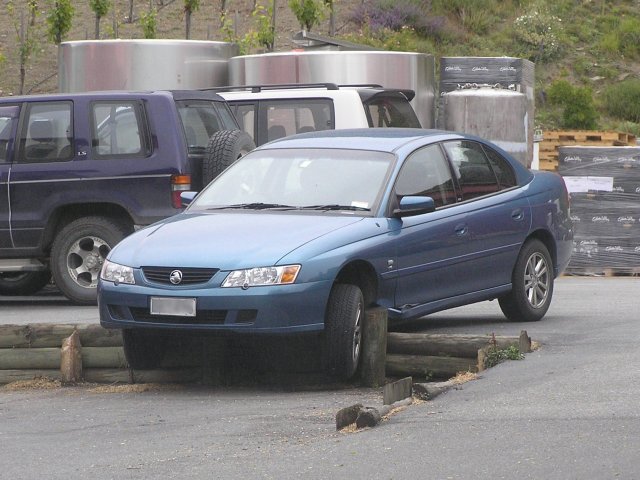
![]()
![]()
![]()
![]()
This car was parked like this when we arrived. The owner should have spat out the wine in their tasting! As we were leaving the driver of a recovery truck was scratching his head working out how he was going to get it off the ledge
![]()
![]()
![]()
![]()
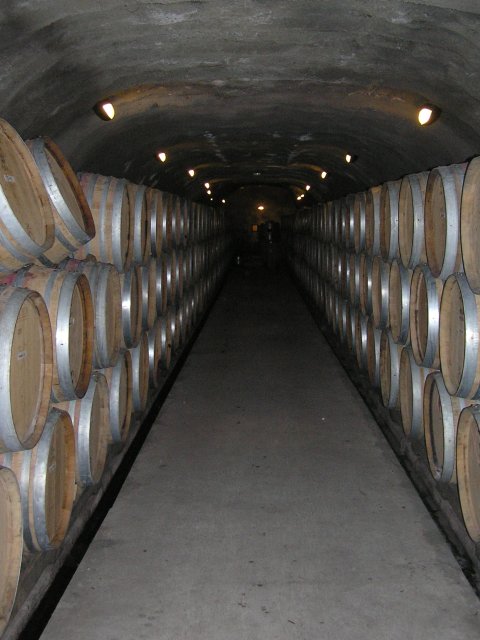
![]()
![]()
![]()
![]()
The well stocked wine cave
We then headed in the direction of Queenstown but via Arrowtown to book a place for the night. From there we drove into the centre of Queenstown, one of the larger towns in the region. The place seemed to be one huge building site and even the most recent map that I looked at seemed to be missing a few roads. It was also very busy which was a bit of a shock as we hadn’t been anywhere that crowded since leaving Auckland. We struggled to find somewhere to park the campervan but eventually managed to squeeze it into a short stay bay. We found the tourism office and grabed some leaflets on local attractions.
On the way back to Arrowtown we drove to Coronet Peak, a ski resort. Some way up the mountainside we drove into the clouds which was pretty cool (both metaphorically and physically!). We had to carry on driving to the top in low visibility before we could turn round and head back to the campsite. We stayed at the Arrowtown Holiday Park. The rain set in for the evening so I tried putting a glass outside. New Zealand rainwater tastes pretty normal!